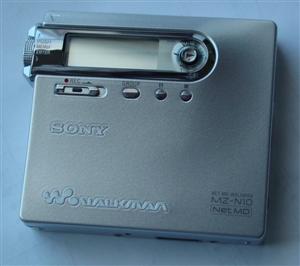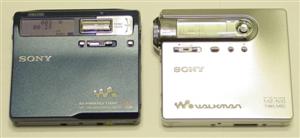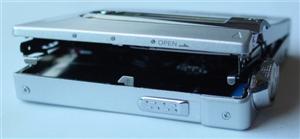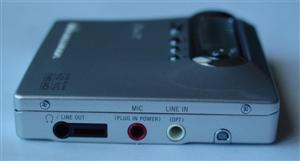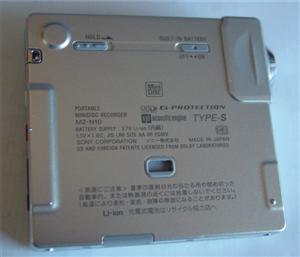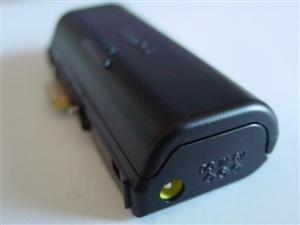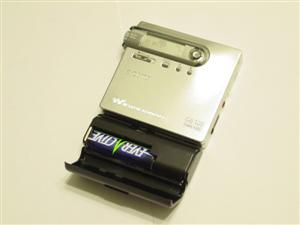|
N10 Review Index: Home In the box/Specs Design User Interface Remote Control General Operation NetMD/SonicStage 1.5 Final Thoughts |

Previous Page :: [page 3] :: Next Page Design
The first thing you'll notice when taking the N10 out of the box is how incredibly light the unit is (the second thing you'd probably notice is the incredible slimness of the unit). Sony went with an internal Li-ion rechargeable (3.7V, 340mAh), which contributes to the unit's reduced size and weight. Both colors of the N10 have a glossy paint finish that feels silky-smooth to the touch. The unit as a whole has a sleek, yet industrial design - the protrusion of the jog dial/knob and the thick internal battery cover on the left side may take some time to grow on you, especially if you liked the clean look of the N10's predecessor, the MZ-N1.
The primary operation buttons line the front face of the unit, with the Track Mark and End Search buttons aligned on the left edge. The open slider switch at the top of the unit will open the unit and eject the disc in one singular motion. The N10 closes with a very solid, firm feel; the lid does not have a hint of flimsiness to its design.
The audio input/output jacks are aligned on the right edge of the unit, along with a small loophole designed for a handstrap (optional, and NOT included).
The internal battery can be removed if you have a jeweler's sized screwdriver, although you probably shouldn't try unless you know what you're doing (the manual even shows you how to remove it; I am not certain as to whether Sony sells the battery separately, but the model # is LIP-3WMB). There is a ON/OFF switch on the back of the unit for the internal battery; turning it OFF is almost the same thing as taking the battery out of the unit (yes, this will allow you to cancel a TOC change, if necessary).
Sony has removed the DC input jack from the main unit, moving it to the side of the external AA-battery case. One might assume that some of the power circuitry was moved with it, possibly freeing up even more size and weight from the main unit, as the external AA case is significantly heavier (and slightly larger) than on previous MD models. The N10 now accepts a voltage of 6.0V DC (probably to accommodate the 3.7V lithium ion cell); if you've been using a 3V adapter for your previous imported Sony units (as I have), that means you'll have to get a new adapter, although a 6V adapter should not be hard to find (the plug size is standard for most 6V adapters, tip-positive).
The external battery case connects to the main unit via the same connector used by the USB cable; the case also screws in to attach itself firmly to the main unit. One interesting change from previous Sony recorders is that the N10 operates off of one battery at a time. Where as previous Sony recorders combined the juice from both the internal cell and external AA simultaneously, the N10 will first run the internal cell, then switch to the external AA only when the internal battery is out. Another interesting note is that the external AA battery cannot be used if the BUILT-IN BATTERY switch is turned OFF. I thought this was a bit odd, but perhaps due to the design of the N10's voltage drive.
To charge the battery, simply plug the power adapter into the cradle, and dock the N10 in the cradle. You can also attach the AA battery case to the N10 and plug the adapter into the AA case. Either method will take about 3 hours to charge the unit completely from empty. While charging, the display on the unit actually tells you how much longer you will need to charge the battery to full. |
